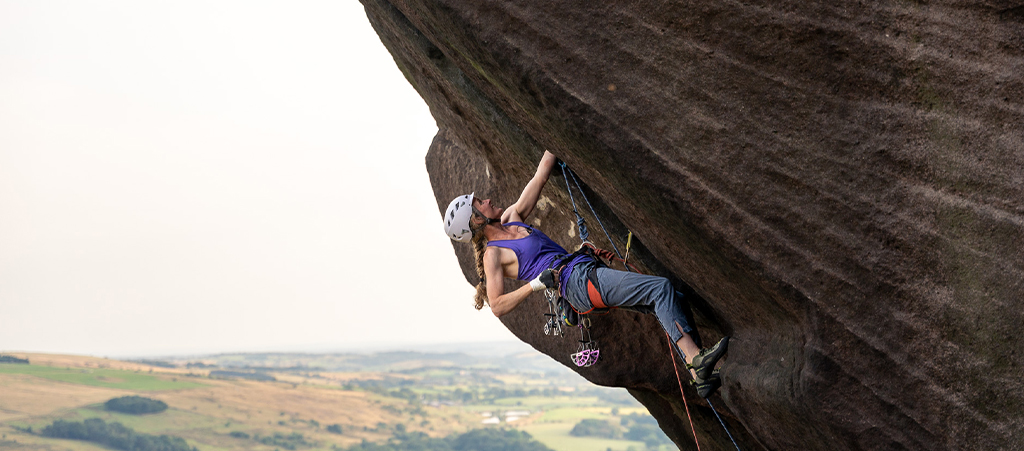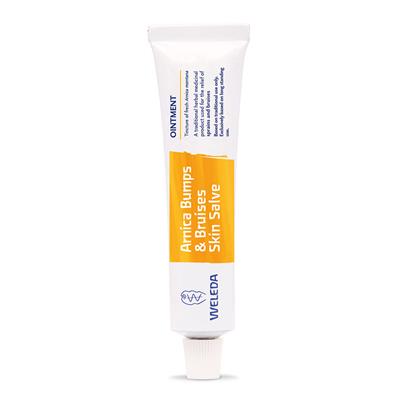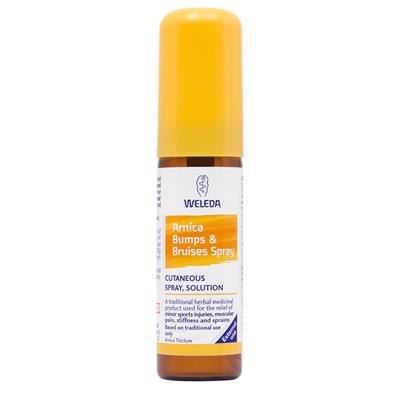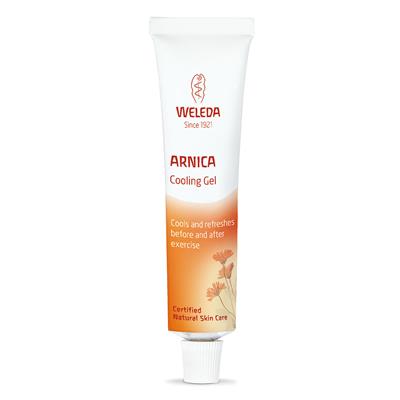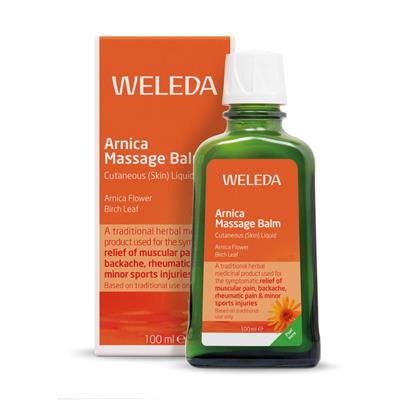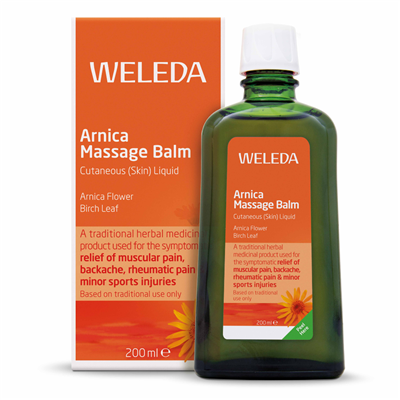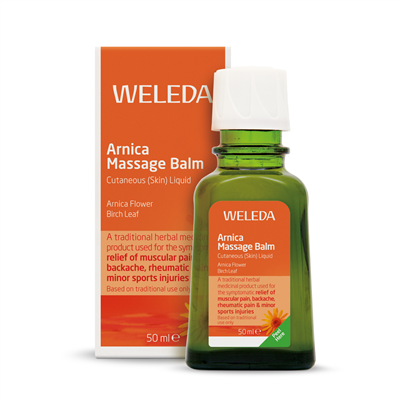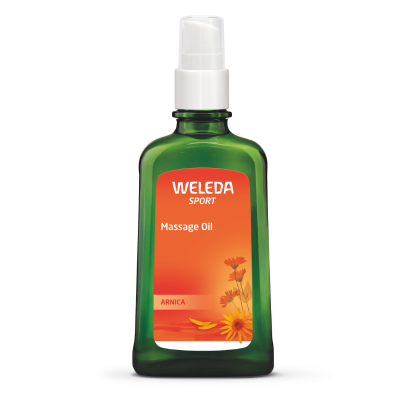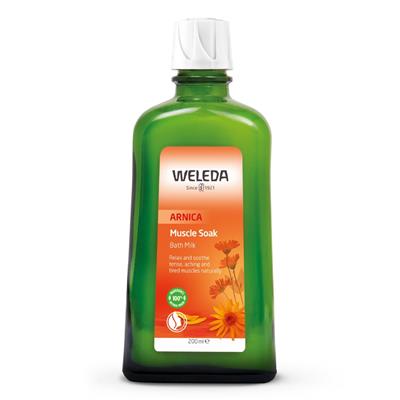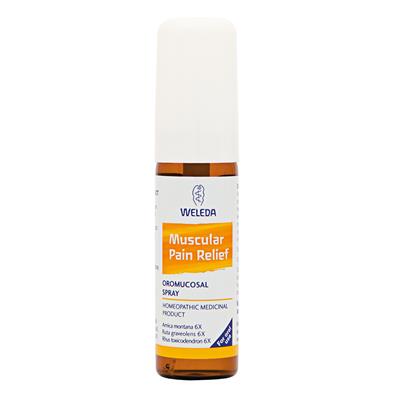Crack Queen - making a film about crack climbing
Weleda Arnica Ambassador Jessie Leong is a photographer, filmmaker, writer, presenter, and climber whose work takes her exploring some of the world's most rugged crags and mountains on foot. ‘The Last Forgotten Art’ is her third film, following on from two award-winning films entered into the ‘Women in Adventure’ competition to encourage more women into filmmaking. Weleda was delighted to support the premiere of Jessie’s new film.
Focused on the importance of storytelling and placing people at the heart of the narrative, Jessie's passion for the outdoors comes through in all her work, whether it's climbing, mountaineering or fellrunning. No stranger to the camera, Jessie cites filmmakers Jen Randall and Jimmy Chinn as her idols and hopes to produce her own feature length climbing film one day. We chatted to Jessie on the eve of the premiere to find out more about her latest film project:
.jpg)
What inspired your latest film?
‘The Last Forgotten Art’ was inspired from watching several adventure films which I felt weren’t as applicable to me as a viewer. Stories I had watched at adventure film festivals were about elite athletes with an achievement focused narrative, working on sheer rock faces with miniscule holds and climbing hard grades.
I felt there was a lack of films in the wider adventure film category that focused on character lead narratives. I wanted to create a community-led piece, with three, relatable central characters, exploring the art of crack climbing using techniques that vary from fist jams to full body struggles. The film features several Ramshaw classics, from the list known as the Cracker’s Dozen suggested by the guidebook writer, Richie Patterson. The film doesn’t finish with the climbers reaching the top of the hardest climb - but that’s more ‘real’ and relatable to what happens when we go climbing.
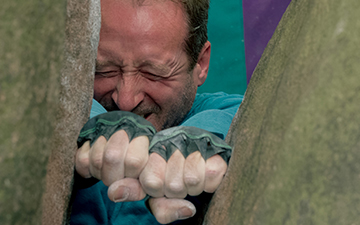
“The modern climber is under-skilled in the area of crack climbing… Here’s the Cracker’s Dozen - a tick list of Ramshaw's best crack climbs that should enable any climber that completes them to hold their head high, in the hope that this mastery will lead them to espouse the virtues of the bloodied hand, fist, elbow and knee and to continue to pass on the grand gritstone tradition, which Johnny Dawes so presciently called, ‘The best forgotten art’.’’
Excerpt from Richie Patterson, The Roaches, BMC Definitive guide (2009)
With the rise of indoor climbing, plus the impact of lockdown restricting training for climbing at the crags, I wanted to focus on how our central characters found a shared passion for crack climbing, through a mixture of bouldering and trad routes. I also was keen to show the rise of urban crack climbing, such as the Dooley Bridge in Sheffield.
The film is also a love letter to Ramshaw rocks, a crag that often gets overlooked as it lacks the obvious holds for hands and feet. I also wanted the viewer to see that a climbing film doesn’t always have to be serious. I wanted ‘The Last Forgotten Art’ to be a film where viewers find themselves laughing out loud.
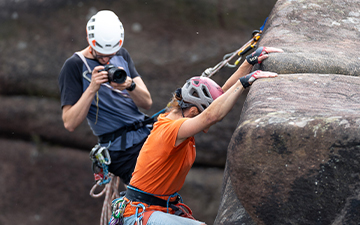
I chose to direct this film because I love crack climbing myself. As a trad climber, I am relatively short at 5’5 - so crimpy face climbs aren’t usually my style - so I get a real sense of satisfaction that I can hold certain positions on steep rock. I want other people to watch this film and feel inspired to try off-width crack climbing. It’s not particularly delicate or precise – as Vicky explains in the film, it’s the inverse of climbing, as it involves getting inside spaces in the rock.
Mel, Vicky, and Steve are the three climbers featured in the film. Despite the fact none of them has been filmed before, they trusted me with the creative process and allowed me to capture them unaware and brought their sense of humour and patience in allowing me to tell their own personal journeys. Everyone who watches the film can relate to the energy, the humour, the moments of lightness, the trust and respect these climbers have for one another.
The common theme in the film is the contrast between brutal and delicate, which I think sums Ramshaw up in a nutshell. There’s the physical brutality in the choice of location (the tough climbing grades, the awkward climbing moves, the roughness of the rock), in stark contrast to the delicate moments in between the climbs. I also wanted the film to show how we take it in turns to support one another on a climb, how climbing lets us reconnect with our sense of self, and the need for mental fortitude.
What was the inspiration for shooting at Ramshaw Rocks?
The inspiration behind ‘The Last Forgotten Art’ was to make a crack climbing film that was shot locally in the Peak District, rather than further afield such as the USA. I wanted to make a film that had a fun energy to it, whilst also being visually stunning. Back in Spring 2022, after my initial journey to climb Ramshaw rocks, I noticed how stunning the rocks looked in spring, and vowed I’d come back in summer when the heather was in bloom. We timed it right – and caught the crag in a sea of purple heather, which looked spectacular.
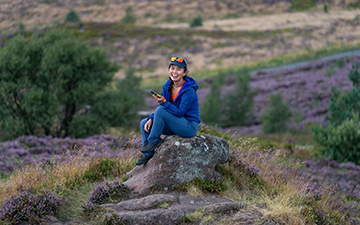
I was fortunate to have an opportunity to work alongside Menna and Steve Wakeford, from Everyfield Films. During production of ‘A Woman’s Place,’ an award-winning film about the Pinnacle Club, I saw how important it was to tell the story, which was a film about a women-only climbing club celebrating its 100th anniversary. Seeing how the film came together, and the response it got after its release, gave me the confidence to make my own film. I just needed to wait for the right characters, timing, and opportunity to weave it all together. I am inspired to get behind the camera as the industry starts to open roles to women and people from a BAME background in leading positions as directors and camera crew.
Initially I felt nervous about working with a bigger production crew and approaching other camera operators and photographers to work collaboratively alongside me. I often struggle with imposter syndrome, as my background has been in photography, rather than filmmaking. I felt I needed to be sure of the storytelling and the cast before committing to organising the shoot, and it can be tempting to hold onto the self-doubt and anxiety that often comes before a big project. However, I was really surprised at how much I enjoyed the overall experience. I feel very privileged to have gained the trust and respect from the climbers as well as the incredible crew I’ve worked with, and built a relationship that puts a spotlight on the climbing community in a positive and relatable way.
What Weleda products do you rely on when crack-climbing?
Climbing can be brutal – crack climbing even more so as it’s physical, thuggy and the perfect way to ruin your clothes. After climbing, I often use Arnica Shower Gel along with the Arnica Massage Oil to ease any muscle tension or soreness, plus Arnica Cooling Gel is very soothing. I also have some Arnica Massage Balm if I’ve been carrying heavy loads after a weekend of filmmaking – the smell is amazing and it helps loosen off tension in my neck and shoulders. After an intensive climbing session outdoors, I also use Weleda Skin Food on my hands as it’s a really intensive, restorative moisturiser that makes sure chalky hands that might feel a bit dry and rough get a bit of TLC.
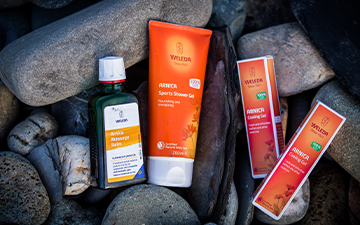
Words: Jessie Leong Photography: Edward Ireland Jones Artwork: Melanie Talbot
Shop the Arnica range:
Arnica 30C 125tabs
Item No.
302007
£8.50
Add to basket
Arnica Bumps & Bruises Salve Ointment 25g
Item No.
205002
£9.50
Add to basket
Arnica Bumps & Bruises Spray 20ml
Item No.
303007
£8.50
Add to basket
Arnica Cooling Gel 25g
Item No.
205028
£9.50
Add to basket
Arnica Massage Balm 100ml
Item No.
204001
£17.50
Add to basket
Arnica Massage Balm 200ml
Item No.
204009
£23.95
Add to basket
Arnica Massage Balm 50ml
Item No.
204002
£10.95
Add to basket
Arnica Massage Oil 100ml
Item No.
106111
£19.95
Add to basket
Arnica Muscle Soak 200ml
Item No.
104017
£17.50
Add to basket
Muscular Pain Relief Oromucosal Spray 20ml
Item No.
303001
£13.25
Add to basket

